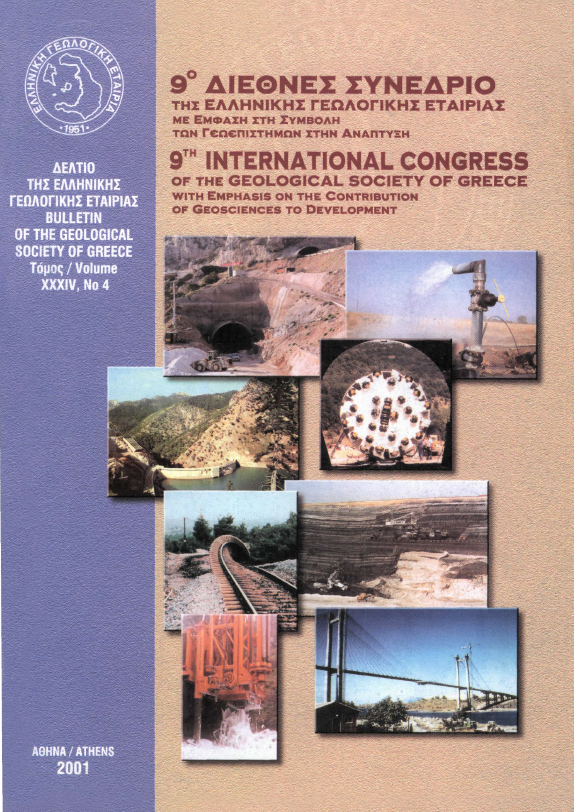Geophysical prospecting for buried antiquities by means of the G.P.R. method in a parking construction area in Lamia

Abstract
Geophysical exploration by means of the Ground probing Radar (G.P.R.) method was carried out in an area where a parking will be erected in the center of the city of Lamia. The exploration aimed to detect and map concealed ancient foundation remains and thus aid the following excavation. The presence of ancient remains was indicated by the revealed ones in the neighboring grounds and there obvious continuation towards the target area. Prospecting was conducted along profiles spaced normally at 1 m separation from the other. Traces were taken stepwise at 0.1 or 0.2 m intervals using antennae of 225 MHz central frequency. Nine profiles of about 40 m long were measured in this fashion. All traces were subjected to dewow filtering, i.e. removal of the slow changing near field inductive component. Also, they were subjected to low pass filtering with the cut off threshold set at 600 Mhz. The particular processing sequence was fixed after several tests run on the traces using various filtering processes. The resulting sections show intense diffraction hyperbolas indicative of the presence of near surface heterogeneities. The so detected subsurface structures were correlated with the visible ruins in the near by grounds. It seems that they have the same direction and thus they all belong to the same urban complex. The positions along the profiles where the hyperbolae occur were marked on a sketch of the area. Thus, the exact map of the concealed foundations was obtained. Slicing, was also attempted, by integrating the amplitudes for several time intervals along the profiles. The obtained pictures confirmed the initial result of the sketch. This case study shows the potential and the benefits of the whole operation. The concealed antiquities were mapped with a non destructive, inexpensive, swift and safe manner. The excavations which followed the geophysical search, confirm the findings. For the shake of interest, the investment proceeded by modifying the initial plans such that big pillars were planted and the antiquities remain intact below a multistore building.
Article Details
- How to Cite
-
ΤΣΟΚΑΣ Γ. Ν., ΒΑΡΓΕΜΕΖΗΣ Γ., ΣΟΥΛΙΟΣ Γ., ΜΕΡΤΖΑΝΙΔΗΣ1 Ι., & ΤΣΟΥΡΛΟΣ Π. (2001). Geophysical prospecting for buried antiquities by means of the G.P.R. method in a parking construction area in Lamia. Bulletin of the Geological Society of Greece, 34(4), 1351–1355. https://doi.org/10.12681/bgsg.17227
- Section
- Geophysics

This work is licensed under a Creative Commons Attribution-NonCommercial 4.0 International License.
Authors who publish with this journal agree to the following terms:
Authors retain copyright and grant the journal right of first publication with the work simultaneously licensed under a Creative Commons Attribution Non-Commercial License that allows others to share the work with an acknowledgement of the work's authorship and initial publication in this journal.
Authors are able to enter into separate, additional contractual arrangements for the non-exclusive distribution of the journal's published version of the work (e.g. post it to an institutional repository or publish it in a book), with an acknowledgement of its initial publication in this journal. Authors are permitted and encouraged to post their work online (preferably in institutional repositories or on their website) prior to and during the submission process, as it can lead to productive exchanges, as well as earlier and greater citation of published work.



